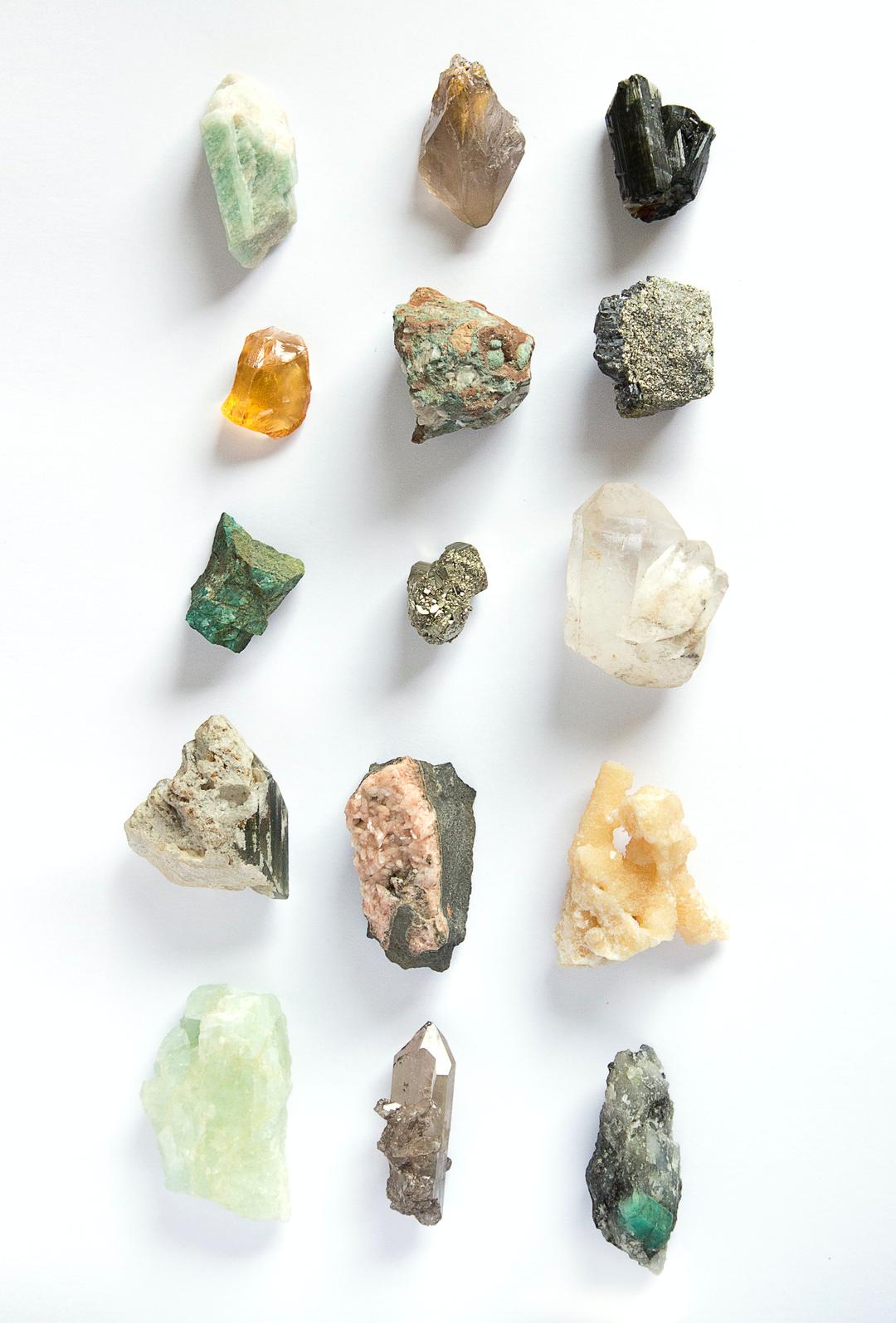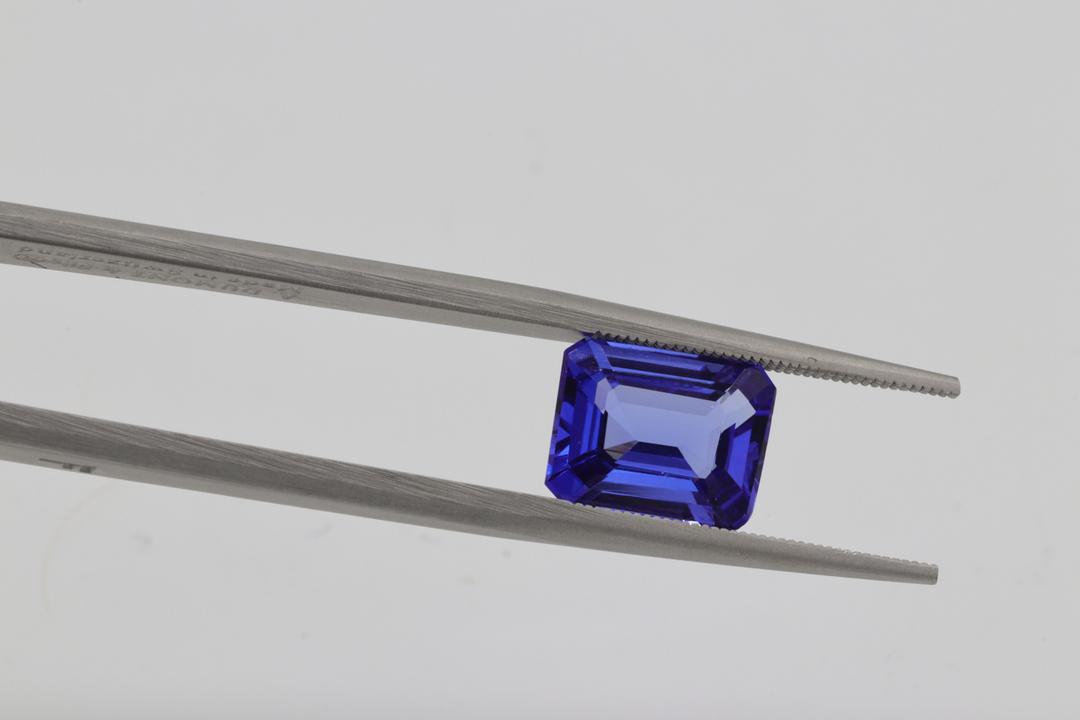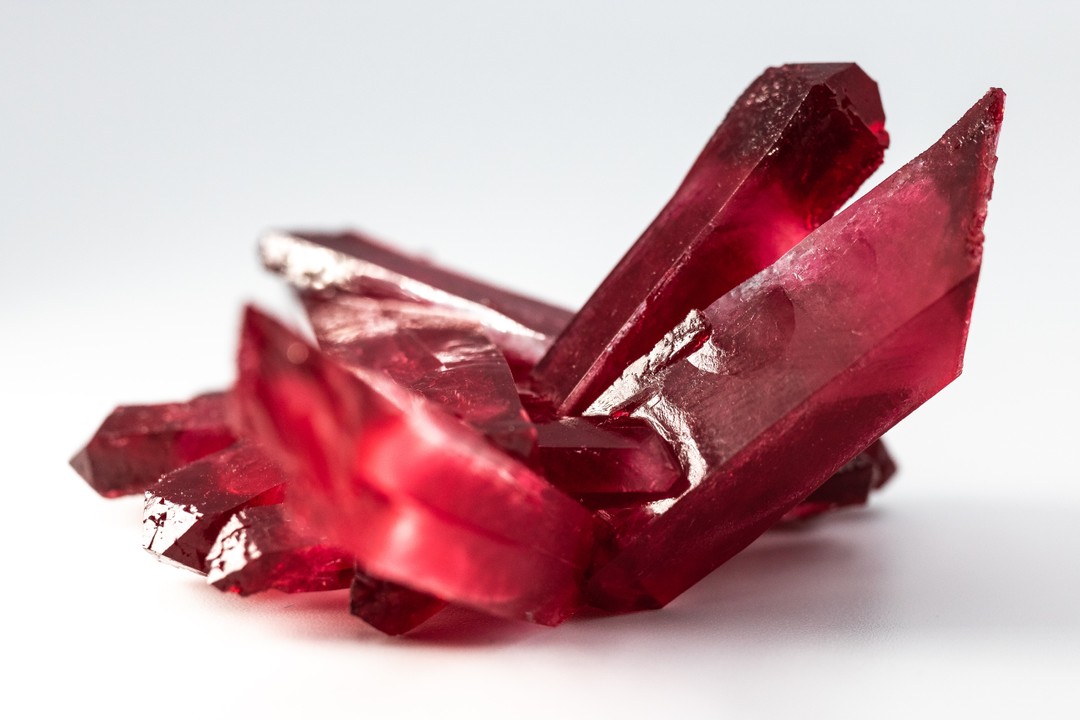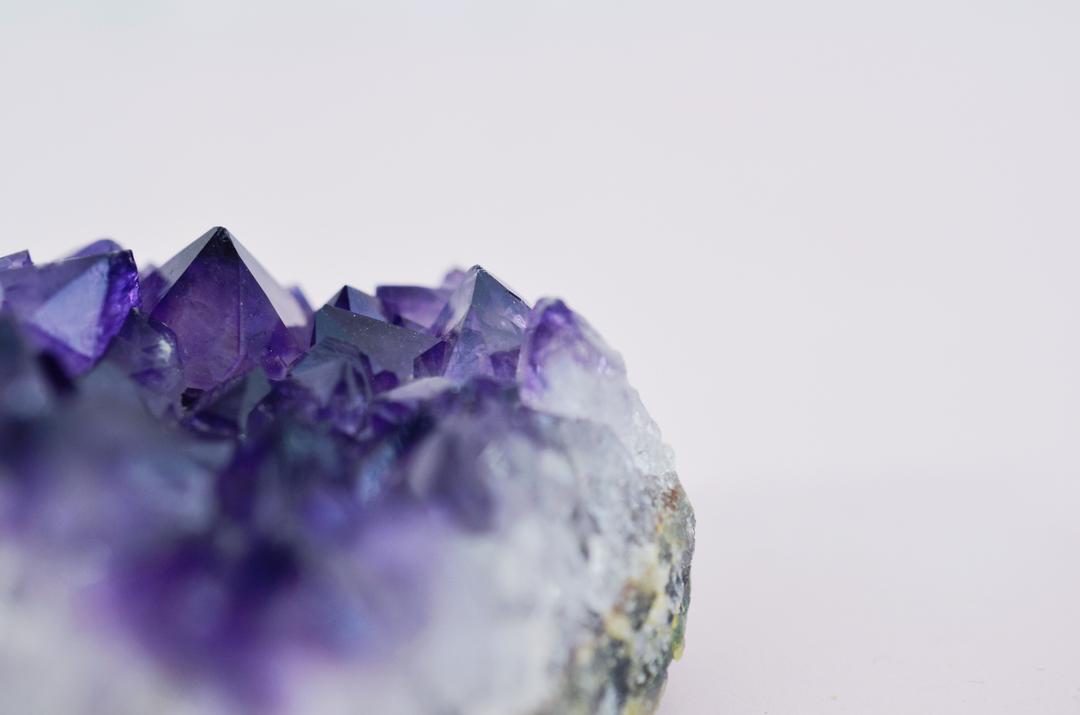10 of the Rarest Gemstones in the World
10 of the Rarest Gemstones in the World
Are you looking to surprise that special someone, or even pop the question, but you want something different than a traditional diamond ring? Or maybe you're interested in starting your own collection of the rarest gemstones from around the world. Whatever your reasoning may be, keep reading below to learn about some of the rarest gemstones in the world as well as the difference between minerals and gemstones.
Minerals vs Gemstones
Both minerals and gemstones have their own science behind them. Technically, all minerals are rocks (yes, Marie was right). Minerals are naturally occurring in the Earth's crust and have unique crystalline structures and chemical compositions. Minerals are classified and identified by these main seven properties: color, hardness, luster, streak, cleavage, fracture, and crystal form.
A gemstone is a piece of mineral crystal which is cut or polished for use in jewelry. There are a few exceptions like lapis lazuli. Hardness and rarity are the two biggest characteristics that give these precious stones value.
Now that you know the difference between a mineral and gemstone, let's dive into ten of the rarest and most precious gemstones in the world!
Both minerals and gemstones have their own science behind them. Technically, all minerals are rocks (yes, Marie was right). Minerals are naturally occurring in the Earth's crust and have unique crystalline structures and chemical compositions. Minerals are classified and identified by these main seven properties: color, hardness, luster, streak, cleavage, fracture, and crystal form.
A gemstone is a piece of mineral crystal which is cut or polished for use in jewelry. There are a few exceptions like lapis lazuli. Hardness and rarity are the two biggest characteristics that give these precious stones value.
Now that you know the difference between a mineral and gemstone, let's dive into ten of the rarest and most precious gemstones in the world!
1. Tanzanite
Tanzanite is a vibrant blue and violet gemstone discovered in Mount Kilimanjaro in Tanzania, which influenced the origin of its name. There's only one location that tanzanite has ever been found in, and the mine is estimated to deplete in the next 30 years, making tanzanite a very rare resource. Even though it's grown scarcer over time, it isn't one of the most expensive gemstones.
Shades of tanzanite can dramatically vary, and stones with naturally vivid hues are more valuable than lighter ones. Most tanzanite stones are heat treated to achieve a more brilliant color.
Tanzanite is the birthstone of December and a traditional gift for the 24th anniversary between couples. It is used in pretty much any jewelry but is especially popular for rings, earrings, and pendants.
Tanzanite is a vibrant blue and violet gemstone discovered in Mount Kilimanjaro in Tanzania, which influenced the origin of its name. There's only one location that tanzanite has ever been found in, and the mine is estimated to deplete in the next 30 years, making tanzanite a very rare resource. Even though it's grown scarcer over time, it isn't one of the most expensive gemstones.
Shades of tanzanite can dramatically vary, and stones with naturally vivid hues are more valuable than lighter ones. Most tanzanite stones are heat treated to achieve a more brilliant color.
Tanzanite is the birthstone of December and a traditional gift for the 24th anniversary between couples. It is used in pretty much any jewelry but is especially popular for rings, earrings, and pendants.
Tanzanite is a vibrant blue and violet gemstone discovered in Mount Kilimanjaro in Tanzania, which influenced the origin of its name. There's only one location that tanzanite has ever been found in, and the mine is estimated to deplete in the next 30 years, making tanzanite a very rare resource. Even though it's grown scarcer over time, it isn't one of the most expensive gemstones.
Shades of tanzanite can dramatically vary, and stones with naturally vivid hues are more valuable than lighter ones. Most tanzanite stones are heat treated to achieve a more brilliant color.
Tanzanite is the birthstone of December and a traditional gift for the 24th anniversary between couples. It is used in pretty much any jewelry but is especially popular for rings, earrings, and pendants.
2. Painite
Painite is a reddish-brown gemstone named after the mineralogist who discovered it, Arthur C.D. Pain, who originally mistook it for a ruby. The first painite crystal was thought to be the only one in the world for a long time until a few more specimens of it were found in 2004. Since then, some mines in Myanmar have come across more painite, bringing the total count in the world to roughly 1,000 gemstones.
Due to painite's scarcity, it's not an easy gem to find in jewelry, but most painite jewelry seems to be rings. Painite is a hard gemstone, but you shouldn't wear it for everyday use in order to avoid scratches.
Painite is a reddish-brown gemstone named after the mineralogist who discovered it, Arthur C.D. Pain, who originally mistook it for a ruby. The first painite crystal was thought to be the only one in the world for a long time until a few more specimens of it were found in 2004. Since then, some mines in Myanmar have come across more painite, bringing the total count in the world to roughly 1,000 gemstones.
Due to painite's scarcity, it's not an easy gem to find in jewelry, but most painite jewelry seems to be rings. Painite is a hard gemstone, but you shouldn't wear it for everyday use in order to avoid scratches.
3. Black Opal
Black opals are another form of opal with a kaleidoscope of rainbow hues striking against a dark background. Unlike regular opals that are pretty common, the black opal is a very valuable gemstone, with most of them mined in Lightning Ridge in Australia.
Black opal jewelry is easier to find from Australian jewelers and typically consists of rings and pendants. They're a softer gemstone so it's important to take care not to scratch or damage the jewelry.
While our designs don't have black opal due to its scarcity and expensive price tag, we do have Bello opal. Bello opal is a synthetic opal that is almost as vibrant as black opal, with unlimited design possibilities. You can take a look at our collection of Bello opal rings here.
4. Benitoite
Benitoite is a deep blue to purple gemstone that was mistaken for sapphire when first discovered. It was discovered in San Benito County, California, but scarce amounts of it are also found in Arkansas, Japan, and Australia. The mine in California that produced benitoite closed down in 2006, which had made this stone significantly more rare.
However, recently the mine opened up a camp for the public to be able to visit and hunt for benitoite. For more information about this mine, check out the benitoite mining company.
Benitoite is the state gem of California. Benitoite is usually made into rings, pendants, and sometimes bracelets.
Benitoite is a deep blue to purple gemstone that was mistaken for sapphire when first discovered. It was discovered in San Benito County, California, but scarce amounts of it are also found in Arkansas, Japan, and Australia. The mine in California that produced benitoite closed down in 2006, which had made this stone significantly more rare.
However, recently the mine opened up a camp for the public to be able to visit and hunt for benitoite. For more information about this mine, check out the benitoite mining company.
Benitoite is the state gem of California. Benitoite is usually made into rings, pendants, and sometimes bracelets.
5. Alexandrite
Alexandrite is a unique gemstone with mesmerizing, color-changing capabilities; the colors can range from blue-green in natural light and change to reddish-violet under incandescent light. In fact, many gems will glow or shift colors under a UV light. Alexandrite was discovered in Russia's Ural Mountains and named after Russian Czar Alexander II, but today it is only mined in Brazil.
Alexandrite is one of the birthstones for the month of June. It is usually made into earrings, rings, pendants, and necklaces. Alexandrite is a pretty hard stone, so you can wear its jewelry without too much worry about damage.
Alexandrite is a unique gemstone with mesmerizing, color-changing capabilities; the colors can range from blue-green in natural light and change to reddish-violet under incandescent light. In fact, many gems will glow or shift colors under a UV light. Alexandrite was discovered in Russia's Ural Mountains and named after Russian Czar Alexander II, but today it is only mined in Brazil.
Alexandrite is one of the birthstones for the month of June. It is usually made into earrings, rings, pendants, and necklaces. Alexandrite is a pretty hard stone, so you can wear its jewelry without too much worry about damage.
Alexandrite is a unique gemstone with mesmerizing, color-changing capabilities; the colors can range from blue-green in natural light and change to reddish-violet under incandescent light. In fact, many gems will glow or shift colors under a UV light. Alexandrite was discovered in Russia's Ural Mountains and named after Russian Czar Alexander II, but today it is only mined in Brazil.
Alexandrite is one of the birthstones for the month of June. It is usually made into earrings, rings, pendants, and necklaces. Alexandrite is a pretty hard stone, so you can wear its jewelry without too much worry about damage.
6. Taaffeite
Taaffeite, named after the man who discovered it (Edward Charles Richard Taaffe), is a pale mauve stone that looks very similar to spinels. Taaffeite has been found in Sri Lanka, and on occasion China and Tanzania, but it's believed that there are less than 50 specimens of actual Taaffeite in the world, with most of them being found in Sri Lanka.
Due to the extreme scarcity of this gemstone, there are a lot of taaffeite imposters. The very rare jewelry that does contain taaffeite are usually in rings.
7. Red Beryl
Red Beryl is a type of beryl that is transparent with hues ranging from bright red to pale pink, but only about 5% of the red beryl found is suitable for cutting gems. Red Beryl can be found in Utah, New Mexico, and Mexico, but it's found in such small quantities that it's considered a rare stone.
Since most stones of red beryl that are found are so small, they’re best used in daintier jewelry, such as rings, earrings, and occasionally pendants. Red Beryl is durable enough that you can wear it every day without any concern about damaging the stone.
8. Grandidierite
Grandidierite is a translucent blue-green mineral that was originally found in Madagascar and named after the explorer who discovered it. Grandidierite often shows trichroic pleochroism, which means that the stone will appear as three different colors from different angles; these colors are typically bright blue, a pale yellow or clear, and deep green.
Grandidierite makes for beautiful jewelry because of its color-changing capabilities. These gemstones are typically found in rings, necklaces, pendants, and bracelets.
9. Jadeite
Jadeite, often just referred to as jade, can come in a variety of colors aside from the milky green that is commonly seen; these wide range of colors include reddish-orange, yellow, blue, pale purple, and even black. Jadeite is a type of jade but differs because of its higher level of quality. Jadeite is mostly used for high-quality jewelry or even adornments on musical instruments or weapons.
The most prominent sources for Jadeite are in Myanmar, Japan, Guatemala, California, and Russia. This gem is incredibly significant to Chinese culture and remains high in demand in the Chinese market, making it an extremely expensive gemstone. Jadeite is in all varieties of jewelry but is a softer gemstone, so you should use care when wearing it.
Jadeite, often just referred to as jade, can come in a variety of colors aside from the milky green that is commonly seen; these wide range of colors include reddish-orange, yellow, blue, pale purple, and even black. Jadeite is a type of jade but differs because of its higher level of quality. Jadeite is mostly used for high-quality jewelry or even adornments on musical instruments or weapons.
The most prominent sources for Jadeite are in Myanmar, Japan, Guatemala, California, and Russia. This gem is incredibly significant to Chinese culture and remains high in demand in the Chinese market, making it an extremely expensive gemstone. Jadeite is in all varieties of jewelry but is a softer gemstone, so you should use care when wearing it.
10. Paraiba Tourmaline
Paraiba tourmaline is a rare variation of tourmaline that is a bright turquoise due to the mineral containing copper. This stone was originally found in Brazil, but some believe that it's also found in Nigeria and Mozambique. The paraiba tourmaline from Brazil has much more intense colors when compared to the tourmaline found in Nigeria and Mozambique.
Jewelry that has paraiba tourmaline typically consists of rings, earrings, and pendants. Paraiba tourmaline is pretty durable so you can wear most jewelry without too much concern for damage.




























Leave a comment